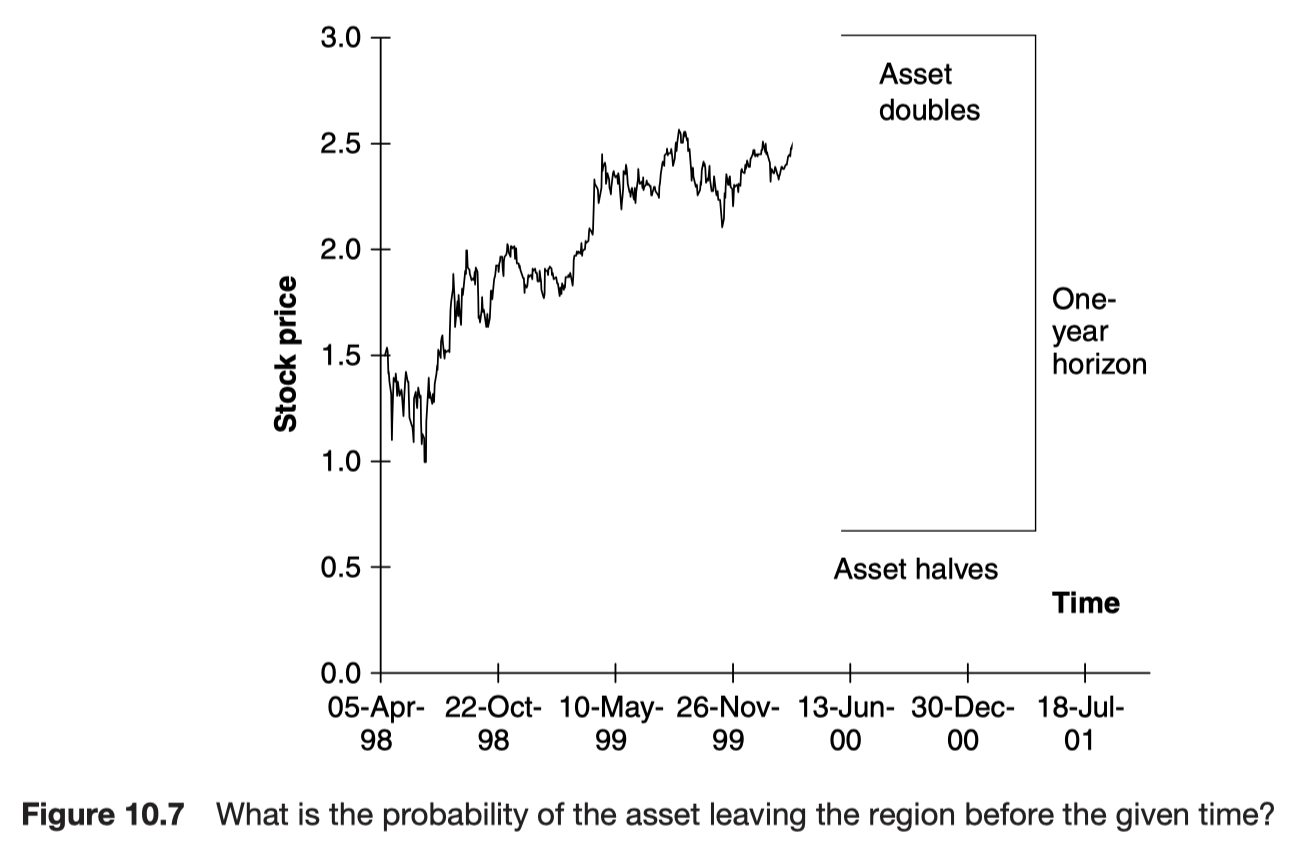
- the transition probability density function
- how to derive the forward and backward equations for the transition probability density function
- how to use the transition probability density function to solve a variety of problems
- first-exit times and their relevance to American options
The transition probability density function
general stochastic differential equation
In lognormal equity world
transition probability density function
In words this is ‘the probability that the random variable y lies between a and b at time t’ in the future, given that it started out with value y at time t.
The transition probability density function can be used to answer the question, ‘What is the probability of the variable y being in a certain range at time t’ given that is started out with value y at time t?’
The transition probability density function p(y, t; y’, t’) satisfies 2 equations
- forward equation: derivatives with respect to the future state and time (y’ and t’)
- backward equation: derivatives with respect to the current state and time (y and t)
These two equations are parabolic partial differential equations not dissimilar to the Black-Scholes equation.
A trinomial model for the random walk

Rise and fall to be the same with probabilities such that the mean and standard deviation of the discrete-time approximation are the same as the mean and standard deviation of the continuous-time model over the same time step.
Jump size is

The forward equation

This is the Fokker-Planck or forward Kolmogorov equation.
- It is a forward parabolic partial differential equation, requiring initial conditions at time t and to be solved for t’ > t
- This equation is to be used if there is some special state now and you want to know what could happen later. For example, you know the current value of y and want to know the distribution of values at some later date.
Example
The distribution of equity prices in the future
the forward equation becomes
The solution is


The steady-state distribution
Steady-state distribution
- In the long run as
- This requires at least that the random walk is time homogeneous, i.e. that A and B are independent of t, asymptotically.

If there is a steady-state distribution
The backward equation
This will be useful if we want to calculate probabilities of reaching a specified final state from various initial states. It will be a backward parabolic partial differential equation requiring conditions imposed in the future, and solved backwards in time.

Backward Kolmogorov equation
First-exit times
The first-exit time is the time at which the random variable reaches a given boundary.

What is the probability of an asset level being reached before a certain time?
How long do you expect it to take for an interest rate to fall to a given level?
Cumulative distribution functions for first-exit times
What is the probability of your favorite asset doubling or halving in value in the next year?
What is the probability of a random variable leaving a given range before a given time?
Function C is the probability of the variable y leaving the region
What makes the problem different from that for the transition probability density function are the boundary and final conditions. If the variable y is actually on the boundary of the region
On the other hand, if we are inside the region

Expected first-exit times
expected first-exit time u(y, t)
The function C satisfies the backward equation in y and t
Since C is one on the boundary of


Another example of optimal stopping
Timing to sell - 2 assumptions
- Knowing the statistical/stochastic properties of investment value
- Wanting to sell at the time which maximize the expected value of investment, with suitable allowance being taken for the time value of money
The last term on the left is the usual time-value-of-money term
This must be solved subject to
with continuity of V and dV/dS. This constraint ensures that we maximize our expected value.

Expectations and Black-Scholes
Expected value of some function F(S)
Present value of the expected amount of an option’s payoff
This is called the risk-neutral random walk.
The fair value of an option is the present value of the expected payoff at expiry under a risk-neutral random walk for the underlying.
provided that the expectation is with respect to the risk-neutral random walk, not the real one.
This result is the main contribution to finance theory of what is known as the martingale approach to pricing.
A common misconception

Delta is not the probability of an option ending up in the money. The 2 reasons are
- There is a
- There is a sign difference.
Summary
If you own an American option when do you expect to exercise it? The value depends theoretically on the parameter
Further reading

